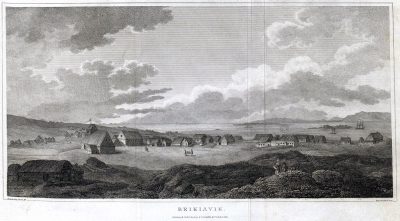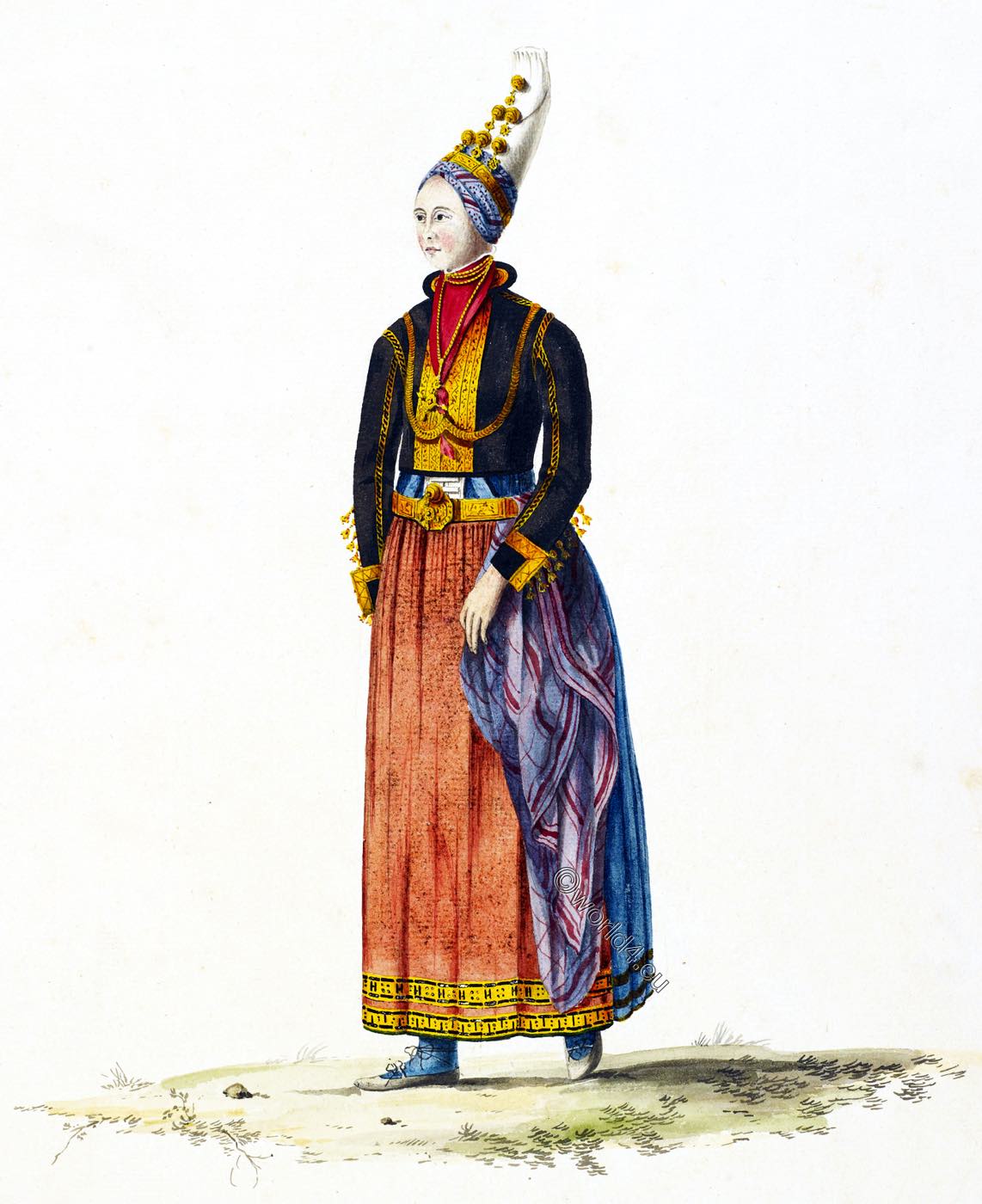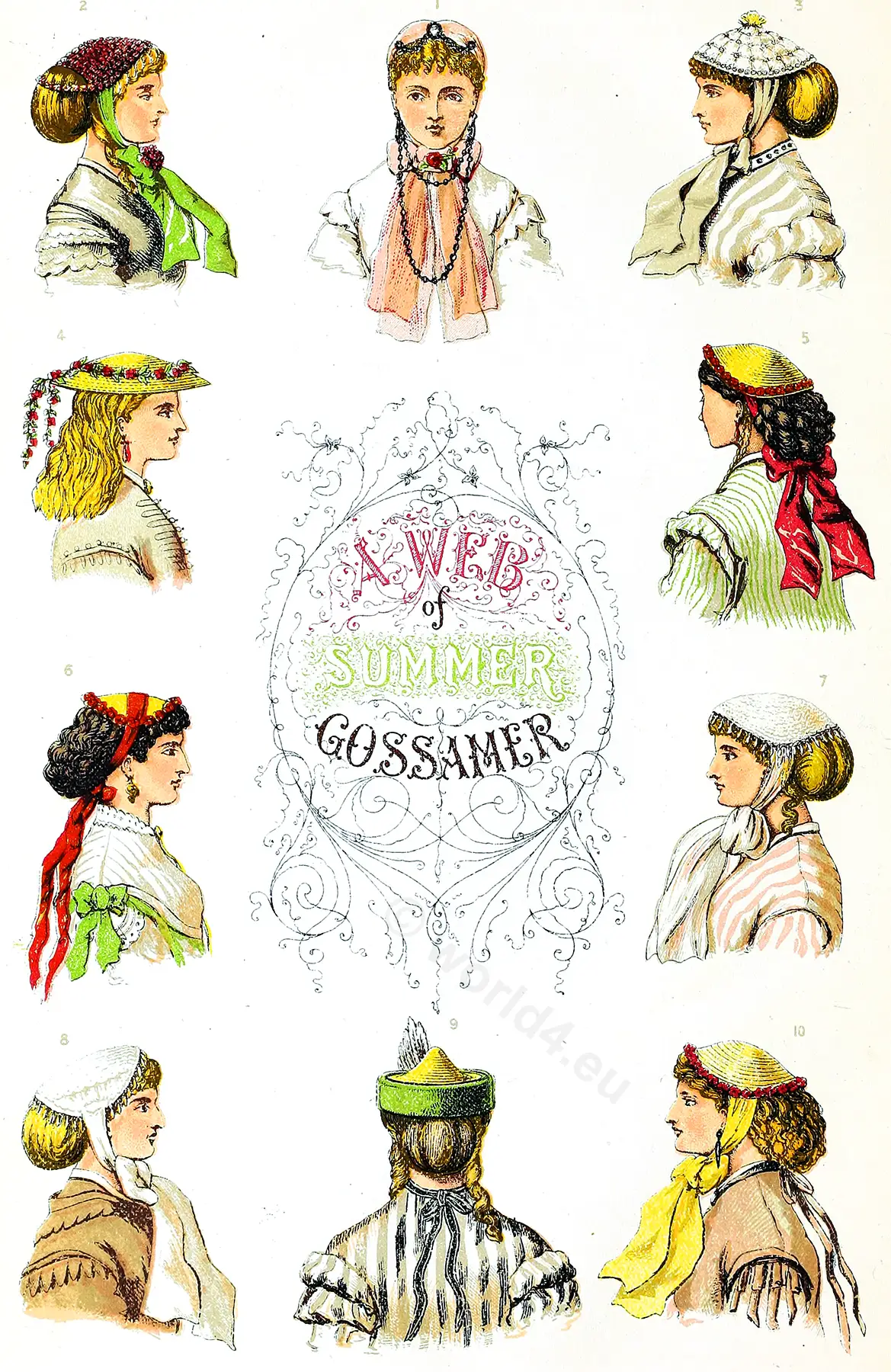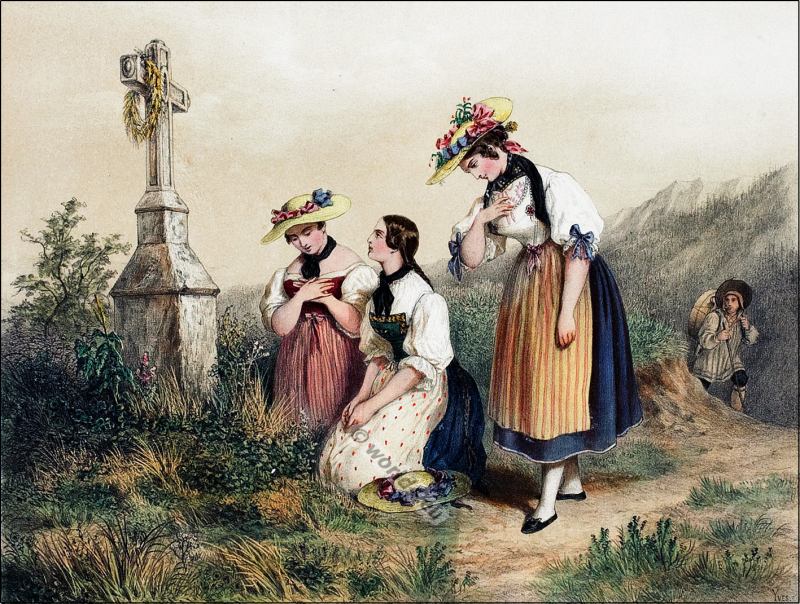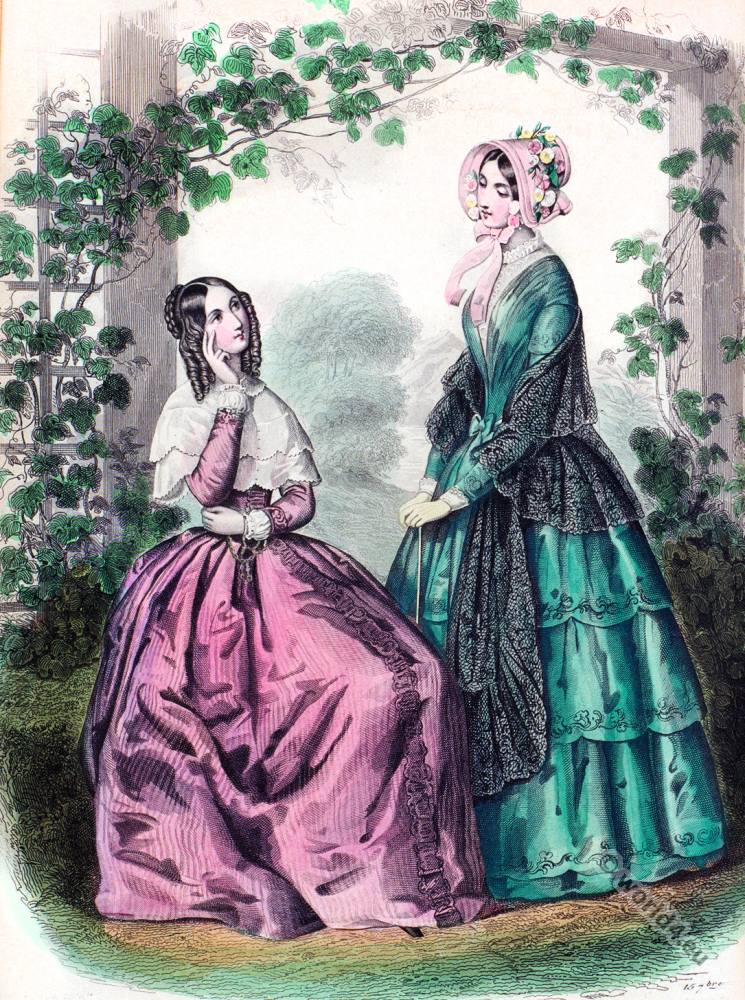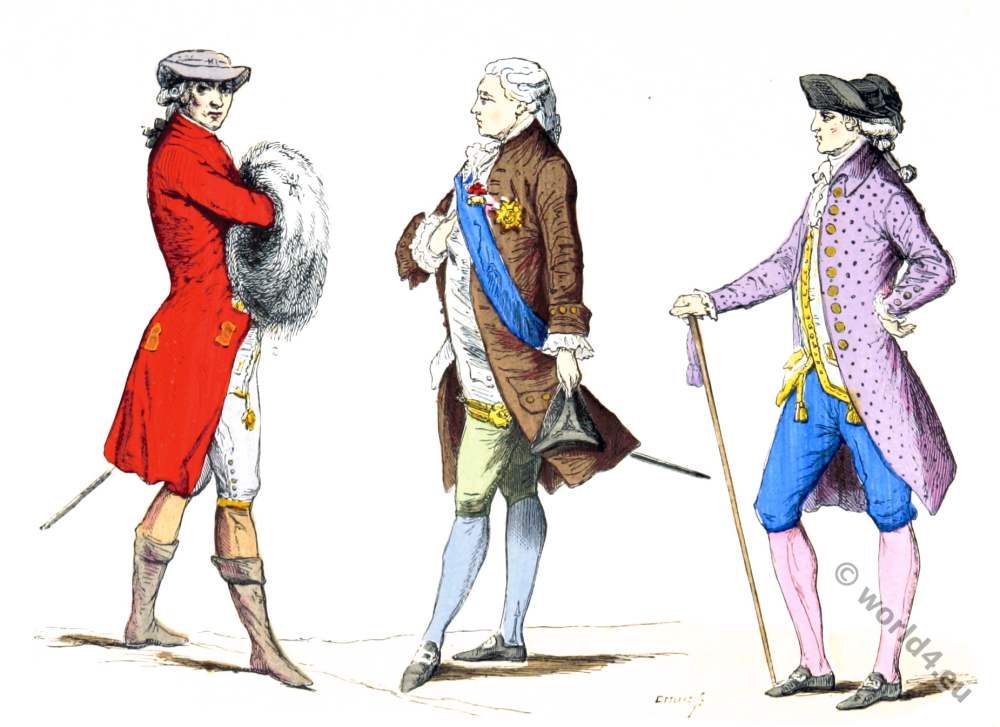
No. 1, is a lady in full dress; No. 2, the ordinary dress of the women of all ranks; No. 3, a lady in a riding dress; No. 4, an Icelander in his best clothes. The jackets of the men are frequently made of black wadmal. No. 5, is the figure of the Reykjavik pilot in his sheep-skin dress, as he came on board the Elbe.
The names of the different parts of the dress are, — faldur, the head-dress, of which the upper part is called, skoit; upphlutur, the waist of the petticoat; fat, the petticoat; noerpills, these when joined together; svinta,the apron; trojè the jacket; hempta a, the cloak; skirta, the shift; hals-festi, the neckchain; kragè, the collar; herda-festi, the shoulder-chain; milnur, the ornamented loop-holes of the waist; lindè, the girdle; sockar, stockings; socka-bond, garters; skior, shoes.
The dress of the women is not calculated to shew the person to advantage. The long waist, bunchy petticoats, and the fashion of flattening the bosom as much as possible, together with the extraordinary head-dress, excited rather ludicrous emotions at the first view; but there is a richness in the whole that is pleasing.
A dress which I procured, consists of a blue cloth petticoat, with a waist of scarlet woolen stuff ornamented with gold lace, and silver loop-holes on black velvet, for lacing it. On the back of the waist are stripes of black velvet, which cover the seams. Over the petticoat is tied an apron of blue cloth, having a silver gilt ornament hanging from the middle of the upper part; and along the bottom, several stripes of light blue stamped velvet. Over the waist is put on a jacket of black cloth, having two stripes of black velvet in front, and next to them two of gold lace. On the back and shoulders are stripes of orange-coloured velvet. Round the waist is buckled a girdle of black velvet, covered with rich Silver-gilt ornaments.

Reikiavik – Reykjavík 1810 
Havnefiord (Hafnarfjörður). 
Krisuvik (Krísuvík) & the Sulphur Mountains (Brennisteinsfjöll). 
Cauldron of Boiling Mud on the Sulphur Mountains (Brennisteinsfjöll) 
Great Jet of Steam, on the Sulpur Mountains. 
Eyafialla Iokul from Hliderende (Eyjafjallajökull glacier from Hlíðarendi farm). 
Mount Hekla from Oddè. 
Eyafialla Iokul, Mount Hekla, & the River Elvas, from Westward.
Illustrations:
- Reikiavik – Reykjavík 1810
- Icelandic Costume
- Havnefiord (Hafnarfjörður).
- Krisuvik (Krísuvík) & the Sulphur Mountains (Brennisteinsfjöll).
- Cauldron of Boiling Mud on the Sulphur Mountains (Brennisteinsfjöll)
- Great Jet of Steam, on the Sulpur Mountains
- Eyafialla Iokul from Hliderende (Eyjafjallajökull glacier from Hlíðarendi farm).
- Mount Hekla from Oddè.
- Eyafialla Iokul, Mount Hekla, & the River Elvas, from Westward.
A collar or ruff of black and crimson velvet ornamented with silver lace, and having attached to it a sort of tippet of black cloth, adorned in front with light brown velvet, is put round the neck. Silver-gilt chains of various forms, and medals, are worn suspended from the neck. On going out of doors, to church, or on any occasion of ceremony, the women wear a cloak or mantle of black cloth, called wadmal. That belonging to the dress above described is ornamented in front with two large hollow con-vex buttons, made of silver gilt and richly ornamented. The cloak is trimmed with two broad stripes of figured woollen stuff resembling black stamped velvet. The head-dress is formed of white linen- or cotton cloth, shaped like a large flat horn bending forwards, and made stiff with a quantity of pins, fastened on the top of the head with a colored silk or cotton handkerchief, which entirely conceals the hair. The petticoat, the apron, and the jacket, are of different colors, though blue and black are the most common; and the ornaments of silver are variously shaped.
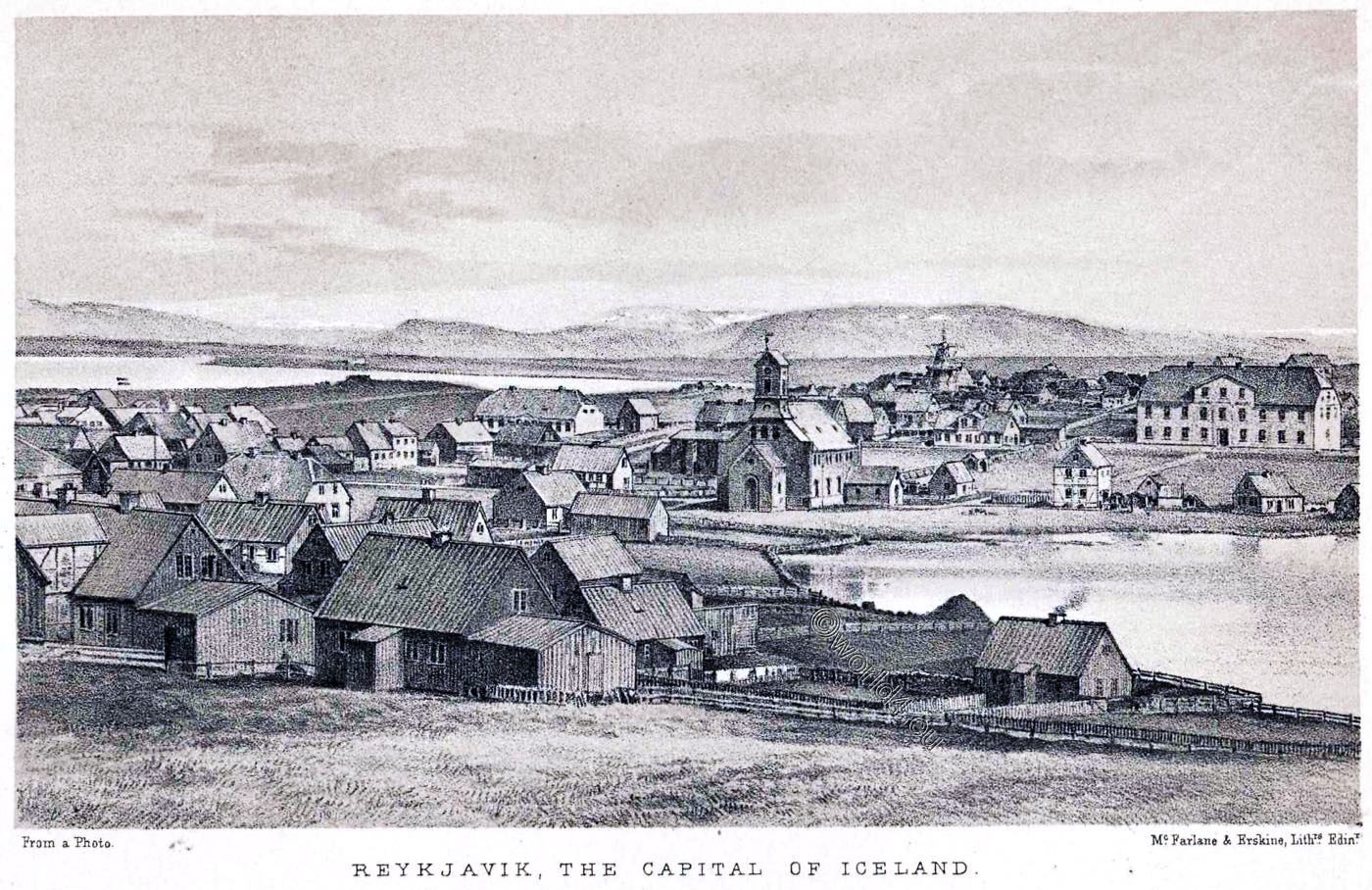
The general fashion of the dress has long remained the same, though the head-dress has undergone some alterations in its dimensions, and in the mode of bending it. Little girls are dressed in the same manner, only they wear a cap variously ornamented. Boys have more gaudy caps. One in my possession is made of blue silk, surrounded with gold lace, and has a green silk tassel on the top.
When a lady goes abroad on horseback, the head-dress is covered by a hat of a very curious shape, which is seen in the engraving.
Source:
- Travels in the island of Iceland during the summer of the year MDCCCX, by George Steuart Mackenzie, William Jackson Hooker, Richard Bright, Henry Holland. Printed by T. Allan and company, for A. Constable and company; 1810.
- Ultima Thule or, A summer in Iceland, by Richard Francis Burton, 1875.
Related
Discover more from World4 Costume Culture History
Subscribe to get the latest posts sent to your email.

